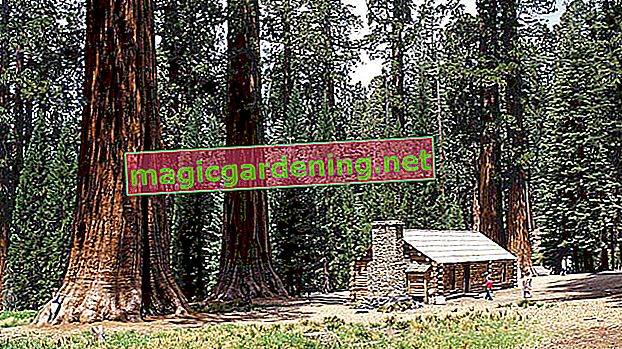
Structure of the sequoia cone
The cone of a sequoia tree has the following properties:
- Length: up to 8.5 cm
- Width: up to 5.5 cm
- Shape: obtuse and ovoid
- Color: olive green, later brown
- Quantity: 10,000 to 30,000 cones on a tree
- lignify and fall down in autumn
- occur individually or in groups
- upright growth during flowering
- ripe cones hang down
also read
- Pine fruits - small cones with amazing properties
- The sequoia does not make great demands on the earth
- Make two out of one - multiply a sequoia tree
Propagation by the cones
The cones of a sequoia contain the seeds with which it reproduces. In order to better understand the seed release of a sequoia cone, it makes sense to first look at its structure.
Structure of a sequoia cone
A sequoia cone has about 25 cone scales. Those are arranged in a spiral and carry the ovules, which in turn are arranged in two rows. They have the task of forming pollination droplets with which Sequoiadendron giganteum reproduces (see below). These pollination droplets are hidden deep inside the cone.
Pollination and seed shedding
The sequoia has two natural pollinators:
- the wind
- and the Douglas squirrel
On the one hand, the cones catch pollen that the wind carries with it. If these meet the pollination drops inside the cone, fertilization takes place.
Likewise, the Douglas squirrel, which the cones serve as food, carries the seeds from tree to tree.
In addition, Sequoiadendron giganteum is one of the monoecious plants. This means that the tree has both male and female flowers, so it can fertilize itself.
The cones dry out at high temperatures. This causes the ovules to open and release the germinal material. Forest fires in particular, which are not uncommon in West America, the home of the sequoia, cause this process. In this case, the still immature, green cones also give off their seeds.
Contrary to what you might think, the fire has an extremely positive effect on the development of the sequoia population. While the thick bark protects the trunk, the fires make the soil arable and provide it with sufficient light by the death of neighboring plants. This creates the best conditions for the seeds to germinate.
Sequoia cones in the focus of research
In order to artificially multiply the sequoia trees, scientists harvest their cones from the treetops. The mostly unripe tree fruits are then heated strongly so that they open and release the seeds. On the one hand, the seeds are used for experimental purposes in order to obtain more precise information about the giant tree, on the other hand, they are put on the market or sold to tree nurseries so that you too can soon enjoy your own sequoia tree in your garden.







